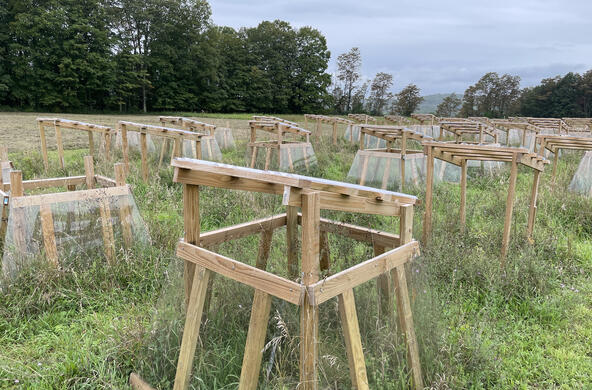More than 25 years ago, David Rind of NASA published a paper with compelling logic about the effects of global warming on drought. He noted that most of the water that forms rainfall is derived from evaporation from the oceans and that the oceans (like lakes in spring) are likely to warm up more slowly than the surrounding land. The rate of evaporation from the oceans’ surface will lag behind the increase in atmospheric temperature recorded on land. Meanwhile, as the Earth warms, there will be increasing evaporation from the land surface. Overall, a warmer Earth will have a hotter and drier land surface, particularly in the central portions of the continents.
Let’s focus on California, where the years with significant rainfall are associated with El Niño conditions, when warm waters gather along the west coast of South America. When we see massive floods in California associated with an El Niño, we are likely to believe that the local water problems are over. Unfortunately, it is not that simple. It takes several years to replenish the stocks of water that are depleted from several years of drought.
If El Niño years become less frequent on a warmer planet, then we’d expect extensive drought in California. Even though an El Niño brought welcome rains to California this winter, the state has been locked in a severe drought since 2012, which appears to derive from less frequent El Niños than in the past.
It is instructive to estimate how long it has been since California has had three or four severe dry years in a row. A three-year drought, matching 2012 through 2014, is a once-in-10,000-year event—thoroughly unprecedented in the historical record. Not surprisingly, this drought was largely due to a failure of winter precipitation. But increased evaporation of water from the land surface is estimated to have exacerbated the shortfall of available water in reservoirs and montane snow packs by 8 to 27 percent.
The importance of increased evaporation driven by higher temperatures is reinforced by several regional climate models for California and the greater American Southwest, developed by Toby Ault of Cornell University and his colleagues. As a result of changes in evaporation, the risk of megadroughts affecting nearly all of this region nearly doubles, regardless of what happens to rainfall trends. Thus, the real impact of global warming may be what it does to evaporation rates from the land surface. We can adapt to warmer temperature, but evaporation will cause a shortfall of water supply for humans and our agriculture. And what happens to California’s agriculture will play out in supermarkets across the United States.
We can expect future year-to-year variability in California’s precipitation, but its warming climate will make the dry years drier through changes in evaporation. No amount of political wrangling by the California legislature will change this.
References
Ault, T.R., J.S. Mankin, B.I. Cook, and J.E. Smerdon. 2016. Relative impacts of mitigation, temperature, and precipitation on 21st-century megadrought risk in the American Southwest. Science Advances 2: doi: 10.1126/sciadv.1600873
Rind, D., R. Goldberg, J. Hansen, C. Rosenzweig, and R. Ruedy. 1990. Potential evapotranspiration and the likelihood of future drought. Journal of Geophysical Research—Atmospheres 95: 9983-10004.
Robeson, S.M. 2015. Revisiting the recent California drought as an extreme value. Geophysical Research Letters 42: 6771-6779.
Williams, A. P., R. Seager, J.T. Abatzoglou, B.I. Cook, J.E. Smerdon and E.R. Cook. 2015. Contribution of anthropogenic warming to California drought during 2012-2014. Geophysical Research Letters 42: 6819-6828.







